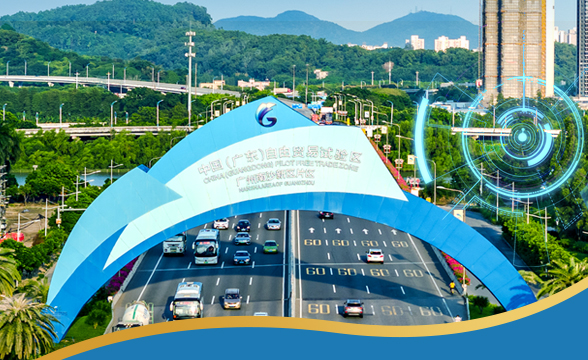Nansha launches 16 sci-tech innovation policies
Nansha district has launched 16 scientific and technological innovation policies aimed at supporting the transformation of Nansha Science City into the main comprehensive national science center of the Guangdong-Hong Kong-Macao Greater Bay Area.
The new policies cover construction of science and technology infrastructure, the settlement of research platforms, breakthroughs in key technologies, the transformation of scientific achievements, and talent introduction.
Scientific research platforms that settle in Nansha, that are in line with the district's industrial development and research directions, and that play a supporting role in major scientific and technological innovation, will be given a grant of up to 200 million yuan ($30.66 million).
Innovative projects which make core technological breakthroughs and promote the application and commercialization of scientific achievements can get a grant of up to 10 million yuan. Innovative talents who undertake national projects or win national science and technology awards will be rewarded a fund of up to 5 million yuan.
Newly-recognized national key laboratories and national engineering research centers can get a one-time reward of 5 million yuan, while newly-recognized national, provincial, and city-level business incubators can receive a one-time reward of 3 million yuan, 1 million yuan and 500,000 yuan respectively.
New-type R&D institutions that are recognized by the province can receive a construction subsidy of up to 30 million yuan, an operation subsidy of no more than 20 million yuan, and an achievement transformation subsidy of up to 30 million yuan.
High-tech enterprises from beyond Guangzhou that settle in Nansha can get a one-time reward of 500,000 yuan. Enterprises that increase their R&D spending by more than 10 percent from the previous year will receive a one-time bonus of up to 10 million yuan per year
High-end talents who start businesses or make long-term innovations in Nansha will be given a settlement subsidy of up to 5 million yuan, and there is a maximum of 10 million yuan for Nobel Prize winners and academicians.
The district will set up a credit risk compensation fund pool of 60 million yuan for small and medium-sized technology-based enterprises.
It also supports entities in the district to set up talent workstations or R&D institutions in the international innovation talent intensive areas and countries along the Belt and Road, with a subsidy of up to 3 million yuan.
All rights reserved. Presented by China Daily










